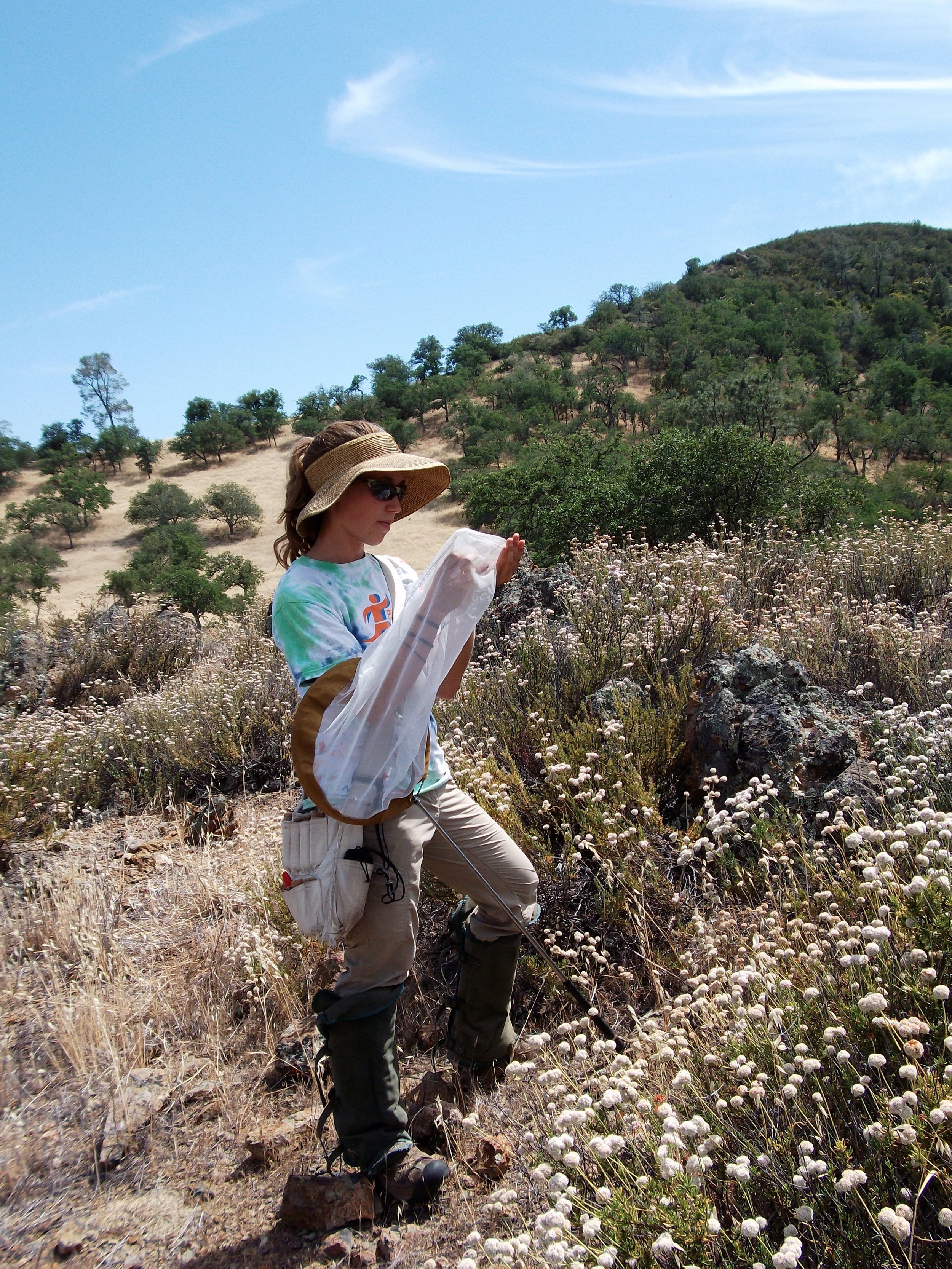Research
Research Overview
Here you will find my current and past research interests and projects. For research outputs, please see my 'Publications' page.
I received my Ph.D. in 2019 and am working to publish my remaining dissertation projects as well as work on some new collaborations. Topics include:
What do we really know about native bee ecology and patterns of decline, and what is the spatial and temporal extend of data available to evaluate this?
See my 2019 PLOS ONE publication on this.
How does the availability of data on native bees influence conclusions about their phenology and foraging patterns?
See info about my talk on this at ESA 2018! Publication in prep.
How might bees use novel resources to respond to sugar shortages due to climate-induced bloom shifts?
One publication, another in prep.
What are underlying foraging and resource-partitioning patterns that allow so many species of bees to cohabit a small area like Pinnacles National Park?
2019 PLOS ONE publication on this.
How might assembly processes and resource-use dynamics determine species richness and composition?
I am also interested in science communication strategies, their societal implications, and tools to overcome lack of public commitment to data and evidence.
Native bee biodiversity at Pinnacles National Park, Ca
My graduate research focused primarily on biodiversity patterns and processes behind the extraordinary native bee diversity documented, through combined survey efforts by O. Messinger, T. Griswold, and myself, at Pinnacles National Park in California. I completed my Ph.D. in 2019, and am in the process of publishing my remaining dissertation chapters and side projects.
My fieldwork at Pinnacles began with the establishment of 10 long-term monitoring plots, included daily plot surveys throughout the 2011-12 flowering seasons, and resulted in a curated, data-based collection of over 50,000 bee specimens identified by combined efforts of myself and taxonomists at the USDA-ARS Logan Bee Lab. At the conclusion of my fieldwork and management of this huge research collection, I supplied the park with a sampling manual to facilitate future native bee monitoring.
In January 2013, President Obama elevated Pinnacles from Monument to Park status, in part due to its remarkable bee biodiversity. Pinnacles is currently America's 59th, and newest, National Park.
The portal project on long-term desert ecology
During my PhD at the University of Florida, I assisted with one of the longest-running community ecology projects. Once a month (with few exceptions), since the project's inception by Dr. James Brown in 1977, a researcher has traveled to Portal, Arizona to trap, measure, sex, and identify the rodents present on 24 experimental plots in the Chihuahuan Desert near the Chiracahua Mountains. This is combined with a twice-yearly plant census of all 24 plots. Dozens of publications have resulted from this project that have improved our understanding of community ecology dynamics over time, regime shifts, the influence of abiotic and biotic factors on species turnover, etc. The most notable product, however, is likely the immense, publicly-available data set.
Coastal ecology at the UNC - Chapel Hill Institute of Marine sciences
Prior to entering graduate school, I worked on a variety of coastal ecology projects as the head research technician in Dr. Charles H. "Pete" Peterson's lab at the UNC - Chapel Hill Institute of Marine Sciences in Morehead City, NC. I managed interns and data collection for experiments investigating potential predators of sea turtles on barrier islands, the ecology of fear in inter-tidal predator-prey interactions, the influence of beach enrichment on crab foraging, and the role of Cownose stingrays on local scallop population decline. I also worked extensively on the Environmental Impact Assessment for the North Carolina Offshore Wind Farm proposal, which was presented to the NC General Assembly in Fall 2009.














